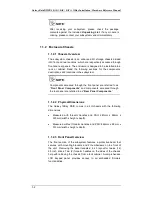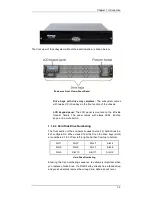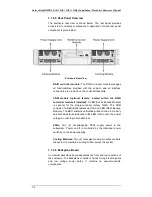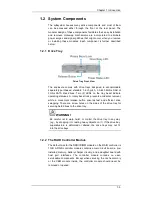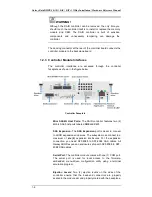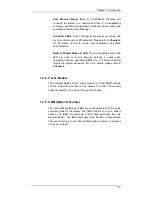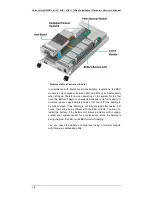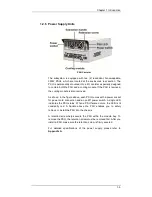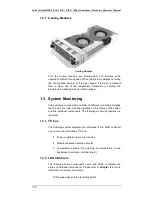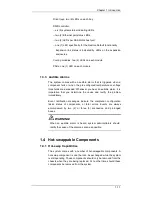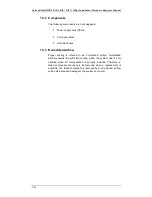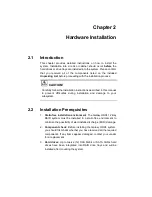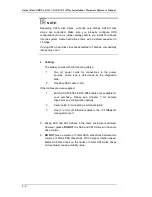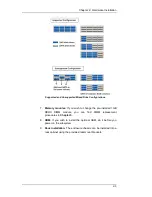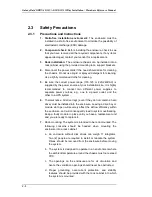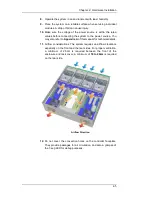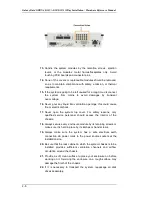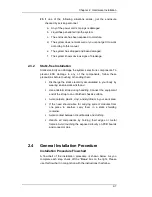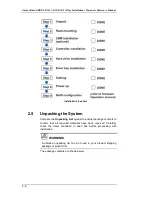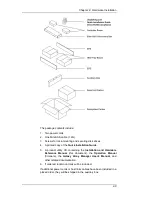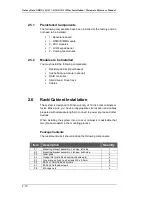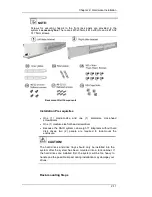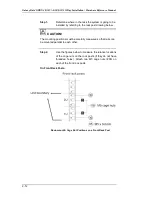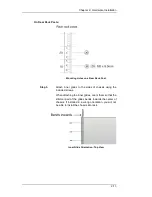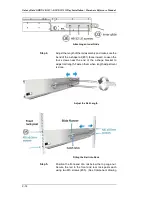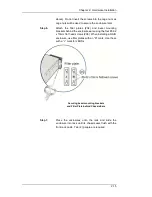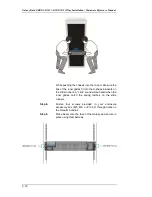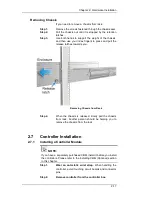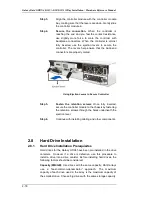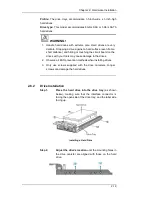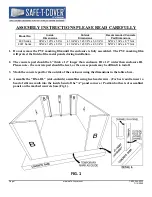
Galaxy Raid GHDX4 SAS<>-SAS/SATA 12Bay
Installation / Hardware Reference Manual
2-4
2.3
Safety Precautions
2.3.1
Precautions and Instructions
1. Static-free installation environment:
The enclosure must be
installed in a static-free environment to minimize the possibility of
electrostatic discharge (ESD) damage.
2. Component check:
Before installing the enclosure, check to see
that you have received all the required components. If any items
appear damaged, contact your vendor for a replacement.
3. Rack installation:
The enclosure chassis can be installed into a
rack cabinet using the provided mounting rails, support brackets.
4.
Disconnect the power cords if the need should arise for cleaning
the chassis. Do not use liquid or sprayed detergent for cleaning.
Use a lightly moistened clothe for cleaning.
5.
Be sure the correct power range (100-120 or 220-240VAC) is
supplied by the power source at your installation site. It is highly
recommended to connect two different power supplies to
separate power sources; e.g., one to a power outlet, and the
other to a UPS system.
6.
Thermal notice: All drive trays (even if they do not contain a hard
drive) must be installed into the enclosure. Leaving a drive bay or
module slot open will severely affect the airflow efficiency within
the enclosure, and will consequently lead to system overheating.
Keep a faulty module in place until you have a replacement unit
and you are ready to replace it.
7.
Rack-mounting: The system is intended to be rack-mounted. The
following concerns should be heeded when mounting the
enclosure into a rack cabinet:
a. An enclosure without disk drives can weigh 17 kilograms.
Two (2) people are required to install or relocate the system.
Drives should be removed from the enclosure before moving
the system.
b. The system is designed to operate in an environment where
the ambient temperature around the chassis must not exceed
35°C.
c. The openings on the enclosure are for air circulation and
hence the ventilation openings should never be obstructed.
d. Proper grounding, over-current protection, and stability
features should be provided with the rack cabinet into which
the system is mounted.

